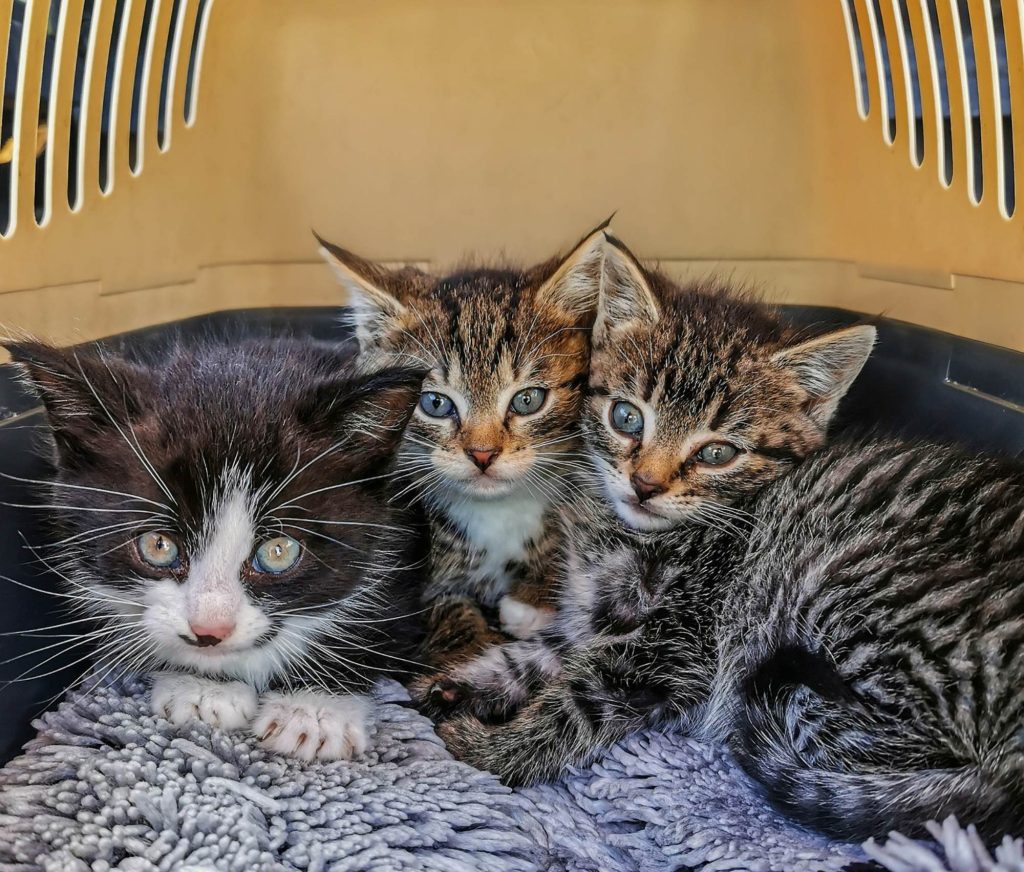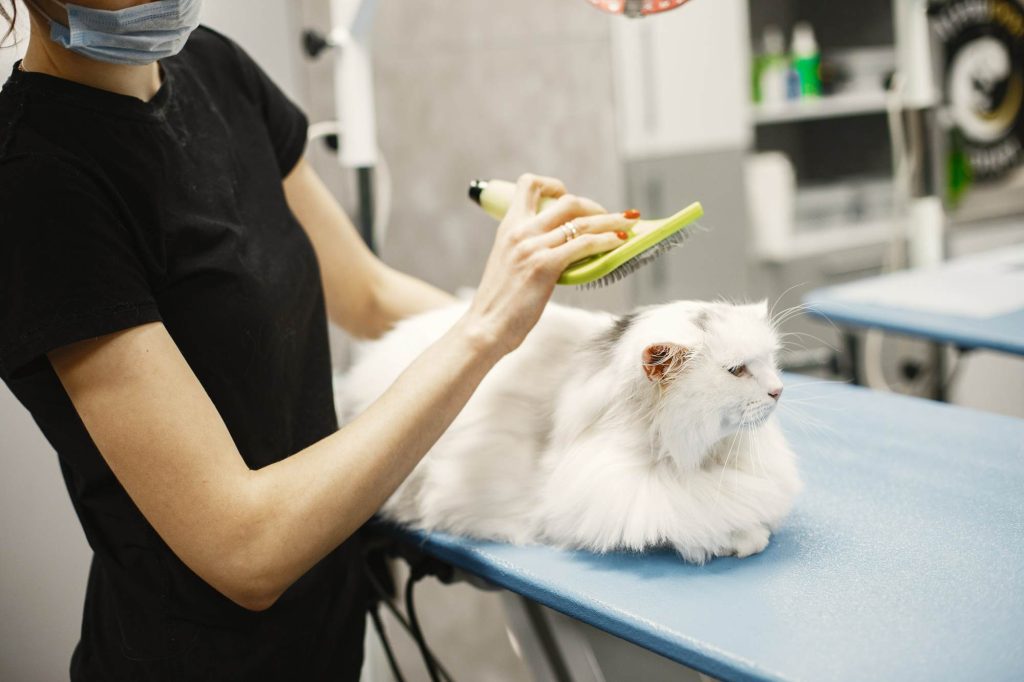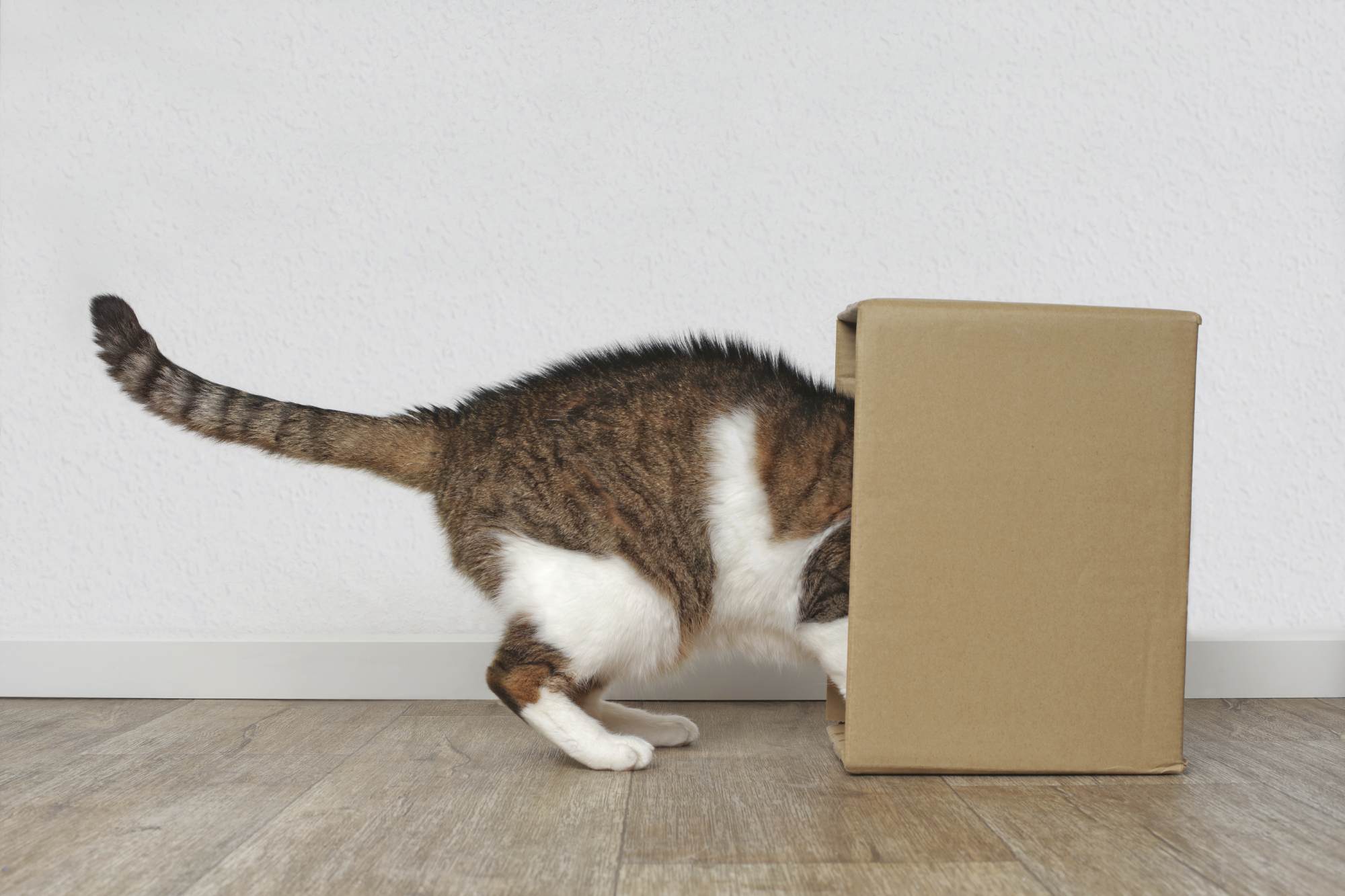Are you moving house with a cat?
For our feline friends, moving can be a very overwhelming experience.
Anyone who owns a cat will be aware of their love of consistency and familiarity, so preparing for your move in advance can really help them adjust to the change more easily.
Most of the time, you won’t be able to eliminate the stress associated with the move entirely.
You may, however, take steps to make relocating with a cat a little bit simpler.
In this article, we offer a few suggestions that you might want to consider.
Before Your Move

Cats are highly sensitive creatures, especially attuned to any shifts in their environment or imminent changes.
It’s a wise strategy to transition their sleeping and dining areas several weeks prior to moving day. Doing so mitigates the stress of adapting to numerous changes simultaneously.
Place their essentials, such as food bowls, scratching posts, toys, and beds, in a quiet corner that will remain undisturbed as the day of the move draws near.
Introducing their cat carrier into this tranquil zone is also prudent.
Many cats have an aversion to their carriers, associating them with vet visits, which can make last-minute introductions to the carrier quite distressing for them.
Familiarising them with the carrier well in advance can transform it into a sanctuary rather than a source of anxiety.
To enhance the carrier’s appeal, line it with a comforting towel or blanket, encouraging your cat to view it as a restful haven. Sometimes, they may even choose to nap in it.
In addition, consider the soothing benefits of pheromone sprays or diffusers, widely available at pet stores.
These products emit scents that create a serene atmosphere for your cat. For an extra enticement, spritz the carrier with a bit of pheromone spray and place a treat or their preferred food inside.
This approach is excellent for making them feel secure and content in preparation for the move.
The Day of Your Move
Moving day is likely to be very chaotic in the eyes of your cat!
It will be very loud, they aren’t going to get as much attention as usual and there will be some new people in their personal space (when using a removal company).
As you may expect this can be very overwhelming for them!
Booking your cat into a cattery for the day while the relocation is taking place is highly recommended, especially if they are accustomed to staying there.
This will make sure they remain secure, contained, and away from all the stresses that can come with moving house.
The next best thing, if they aren’t able to go to a cattery, is to designate a room as a “safe zone”.
This is somewhere that your cat can be kept behind a closed door and away from the noise and commotion.
As we previously said, making sure your cat feels comfortable in their carrier can really help ensure that they remain safe and content at all times.
Getting Your Cat to Your New Home

Although they may not appreciate it, transporting your cat by car is often a necessity during a move.
Cats typically do not share the enthusiasm for car rides that many dogs do, often associating the experience with stressful vet visits rather than adventure.
To ease their discomfort, consider covering the carrier to create a sense of security, offering a meal prior to departure, and experimenting with various types of carriers to find the one that best suits your cat’s comfort.
It’s also wise to place a waterproof layer or a blanket beneath the carrier in your vehicle to protect against any potential mishaps, which are more likely to occur if your cat is anxious during a lengthy journey.
Above all, the most valuable advice is to consult with your veterinarian.
They can provide tailored guidance for your cat and ensure you’re equipped with any additional tips specific to your furry friend’s needs.
Moving Day Essential Bag
Creating a ‘moving day essentials bag’ for your journey is crucial, particularly when covering more ground. This kit should be filled with items to maintain your cat’s contentment throughout the move.
Don’t forget to pack their beloved toys, familiar food, enticing treats, and grooming tools.
Additionally, include bottles of water, a portable litter box, suitable litter, and various bowls for feeding and hydration.
It’s sensible to also have a kitchen towel or wet wipes at the ready to swiftly deal with any messes or unexpected spills.
Having these essentials within reach will not only soothe your cat during the transition but will also simplify the process for you, ensuring a smoother move for everyone involved.
Preparing Your New Home
Now that you have successfully moved, you will need to prepare your new home for your cat.
One of the first things to do is clean…sounds like fun!
This is especially the case if the previous owner also had cats.
Don’t be too concerned about things like shelves that are out of reach or the tops of doors at this point.
We are sure you’ll get around to a full clean at some point but for now, cleaning everything that is “cat height” or lower will set them at ease.
Checking the new home’s cat-proofing is also a priority.
All windows and doors should be shut, and any plugs or electrical wires that your cat could get stuck in should be kept out of the way.
For a few days, pick one of the rooms to serve as the cat’s room.
It will help if you surround the cat carrier with a few things that still smell like your former house.
Make sure you put their dishes of food and drink next to the carrier.
You can allow your cat out to explore while keeping the room door locked (for now).
Allowing your cat to explore one room at a time in this way helps them adapt to the new environment without feeling overwhelmed.
Routine and Familaraity

Try keeping your cat on the same schedule as before you moved despite everything that is going on.
Feeding your cat at regular intervals and making an effort to spend some alone time with them will help them feel less anxious.
It is inevitable that their pattern will occasionally change, but try to keep it as much as you can to lessen the worry your cat will experience.
You should also try to place familiar items like bedding, toys, and scratching posts around the house to provide a sense of comfort.
These items will remind them of their old home and should help them to settle quickly.
Playing calming music or using pheromone diffusers can also help create a soothing atmosphere.
Cats will show you indications of stress by hiding, excessive meowing, or changes in their appetite.
Be patient for the first few weeks after moving and provide as much comfort as possible during this adjustment phase.
Register With Your New Vets

You must sign your cat up with the neighbourhood vet clinic after you’ve had some time to settle into your new home.
If you need to switch practises, you should do so well in advance of your move to ensure that your new veterinarian has access to all of your cat’s medical records.
Most places you move to will have a nearby local vet, a quick Google should help!
The best way to find a veterinarian is to look for the Royal College of Veterinary Surgeons (RCVS) registration.
This is the best way to find a reliable and trustworthy vet in a new area.
Ready to Move House?

By following the advice found in this article, we hope to alleviate some of the strains of moving with a cat.
Ensuring you have the help of a trustworthy and knowledgeable removals company when moving home is also key.
With years of experience moving individuals and families alike to locations throughout the UK, R.H Pardy Moving & Storage Limited can assist you with every aspect of your move.
Our specialist team can guide you throughout every aspect of your move.
For added assurance, you will have the knowledge that you are dealing with a member of the British Association of Removers.
For more information about our removals services, be sure to give us a call today at 01202499390, or fill out our quick and easy contact form here.
A member of our team will be more than happy to help you get your move started in no time!
FAQs
How long will it take for my cat to adjust to the new home?
Some cats may settle into their new surroundings within a handful of days, while for others, it might take several weeks to fully acclimatise. The time it takes is often influenced by the cat’s unique personality, past experiences, and even their age.
During this time, it’s important to offer a safe, quiet space for your cat, where it can retreat to if things become overwhelming. Familiar items from your previous home, like their favourite toys or blankets, can also help to provide comfort and a sense of familiarity. Patience and gentle reassurance from you will support your cat through this transition, ensuring it adjusts at its own pace to feel confident and secure in its new environment.
Should I keep my cat indoors after the move?
Certainly, it’s advisable to keep your cat inside for the initial few weeks after moving. This precautionary measure helps to prevent them from becoming lost or disoriented while they familiarise themselves with the new environment.
During this indoor period, it’s beneficial to spend quality time with your cat, helping to establish a sense of safety and bonding in the new home.
Can I use sedatives to calm my cat during the move?
It’s best to avoid sedatives unless recommended by a veterinarian.
Sedatives can have unpredictable effects on cats and might not address the underlying stress.
Will my cat’s litter box placement change after the move?
Initially, place the litter box in a quiet and familiar location.
You can gradually move it to a more permanent spot once your cat is comfortable with the new surroundings.
How can I help my cat bond with the new environment?
Spend quality time with your cat in different areas of the new home.
Engage in play sessions and provide treats to create positive associations with the space.




